Do you want to add a covered call strategy to your portfolio but don’t want to deal with managing the options over time? A covered call ETF is a great option to consider.
Covered calls reduce both the amount of upside as well as the downside that an investor gets from an underlying investment.
Blackrock illustrates that capturing only 84% of the upside and downside of the S&P 500 has outperformed capturing the full 100%.
A covered call strategy can also lead to extremely high annualized yields from your investment.
We will cover the best covered call ETFs in Canada below and discuss some of their key features.
What is a Covered Call ETF?
A covered call ETF has two elements that make up the strategy:
- Underlying stocks of the ETF, which are sometimes part of an index
- The call options on the underlying stocks or index that are sold by the portfolio manager
In order for a covered call strategy to work, an investor must continue to hold the underlying securities over time as the call options are sold. The portfolio manager of a covered call ETF will determine how often calls are sold, although this is typically done on a monthly basis for monthly income.
By selling call options on an underlying investment, you are trading away extreme upside potential for upfront cash today, which helps to smooth returns. This provides benefits in most market conditions, as seen in this graphic:

Pros and Cons of Investing in Covered Call ETFs
Covered call ETFs come with their advantages and disadvantages, just like all other possible investments.
Overall, covered call strategies are fairly resilient and provide investors with a great source of income.
- Usually has an extremely high-income stream
- Less extreme gains and losses (lower volatility)
- More frequent income (usually on a monthly basis)
- Relatively higher management fees
- Reduced upside potential
- Income (as a percentage) may not be as stable as a dividend yield
10 Best Covered Call ETFs in Canada
- BMO Canadian High Dividend Covered Call ETF (ZWC.TO)
- BMO US High Dividend Covered Call ETF (ZWH.TO)
- Horizons Canadian Large Cap Equity Covered Call ETF (CNCC.TO)
- CI Tech Giants Covered Call ETF (TXF.TO)
- BMO Covered Call Dow Jones Industrial Average ETF Hedged (ZWA.TO)
- CI Energy Giants Covered Call ETF (NXF.TO)
- CI Health Care Giants Covered Call ETF (FHI.TO)
- BMO Covered Call Canadian Banks ETF (ZWB.TO)
- Horizons Gold Producer Equity Covered Call ETF (GLCC.TO)
- Hamilton Enhanced Multi-Sector Covered Call ETF (HDIV.TO)
1. BMO Canadian High Dividend Covered Call ETF
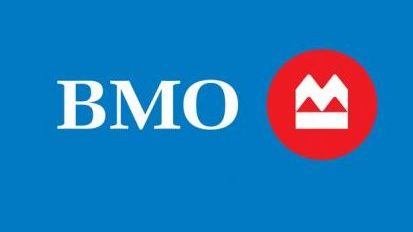
- Ticker: ZWC.TO
- Inception Date: February 9, 2017
- Assets under Management: $1.64 Billion
- Management Expense Ratio: 0.65%
- Management Style: Active
- Risk Rating: Medium
- Distributions: Monthly
- Yield: 7.63%
- Stock Price: $16.54
- YTD Return: -0.29%
ZWC is a covered call ETF on the Canadian shelf offered by BMO. The ETF invests in Canadian stocks across multiple sectors that are already paying a high dividend.
The stocks within ZWC follow a rules-based methodology and not an index. The team at BMO selects the stocks within ZWC based on:
- Dividend growth rate
- Yield
- Payout ratio
- Liquidity
Since ZWC invests across sectors, it is more suitable than sector-specific covered call ETFs for a core (larger) position within a portfolio.
The ETF has a medium-length performance track record and is a massive fund in terms of assets under management. ZWC pays a high yield on a monthly basis to investors.
In terms of fees, ZWC is on the inexpensive end relative to other covered call ETFs. BMO’s medium risk rating for ZWC is a good assessment of risk for the fund.
Since ZWC invests broadly across high-dividend Canadian stocks and has great overall features, it is an excellent choice to consider for your portfolio.
2. BMO US High Dividend Covered Call ETF

- Ticker: ZWH.TO
- Inception Date: February 10, 2014
- Assets under Management: $917.5 Million
- Management Expense Ratio: 0.65%
- Management Style: Active
- Risk Rating: Medium
- Distributions: Monthly
- Yield: 5.71%
- Stock Price: $22.3
- YTD Return: 2.55%
ZWH is another covered call ETF on the Canadian shelf, also offered by BMO. This ETF invests in high-dividend US equities across different sectors.
Similar to ZWC, ZWH follows a rules-based methodology. Equities within ZWH are selected on the same basis as the stocks within ZWC:
- Yield
- Dividend Growth Rate
- Payout ratio
- Liquidity
The ETF is broadly diversified across US sectors and is suitable for a more core position within portfolios.
ZWH has a fairly long performance track record and is a very large fund in terms of assets. ZWH offers distributions on a monthly basis and pays a high yield.
ZWH currently costs the same as ZWC and is cheap relative to other covered call ETFs. A risk rating of medium is again appropriate for the strategy.
As a nearly identical strategy to ZWC, ZWH is another excellent covered call ETF in Canada that focuses on US stocks.
3. Horizons Canadian Large Cap Equity Covered Call ETF
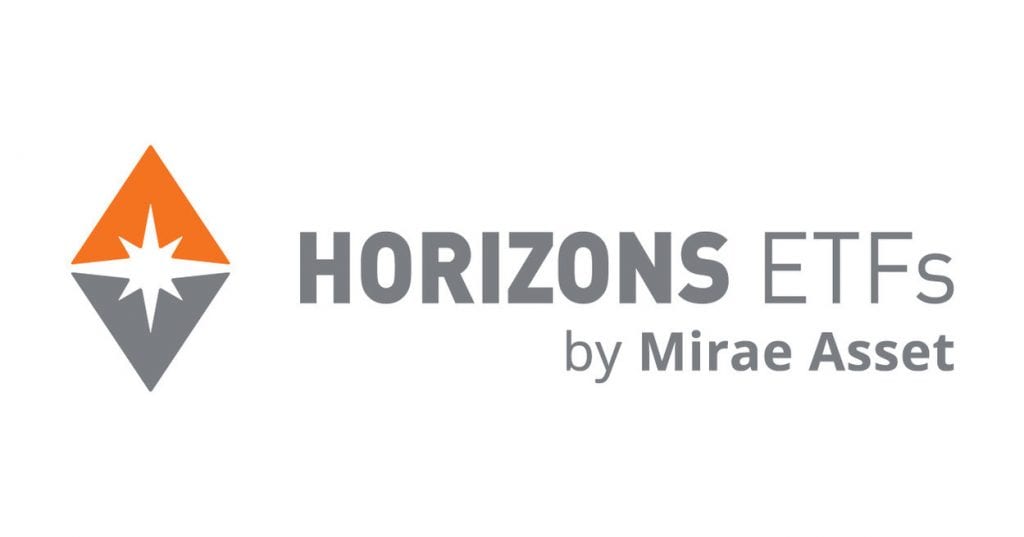
- Ticker: CNCC.TO
- Inception Date: March 16, 2011
- Assets under Management: $27.08 Million
- Management Expense Ratio: 0.85%
- Management Style: Active
- Risk Rating: Low-to-Medium
- Distributions: Monthly
- Yield: 9.56%
- Stock Price: $11.71
Horizons is another large investment manager within the covered call space in Canada. CNCC is a covered call strategy applied to a Canadian large-cap equity strategy to generate additional income.
The stocks within CNCC are some of the largest and most liquid Canadian equities. This is done by holding another ETF from Horizons, HXT, as the main underlying position (which is a passive fund tracking the return of the S&P/TSX 60 index).
CNCC has a long performance track record and is a very small fund in terms of assets. It may be at risk of closing down in the future if it isn’t able to attract additional assets from investors.
The ETF pays an extremely high yield to investors on a monthly basis.
With regard to fees, it is slightly more expensive than some of the covered call ETFs available from BMO.
CNCC is a high-yielding covered call ETF to consider if you are looking to invest in large Canadian companies.
4. CI Tech Giants Covered Call ETF
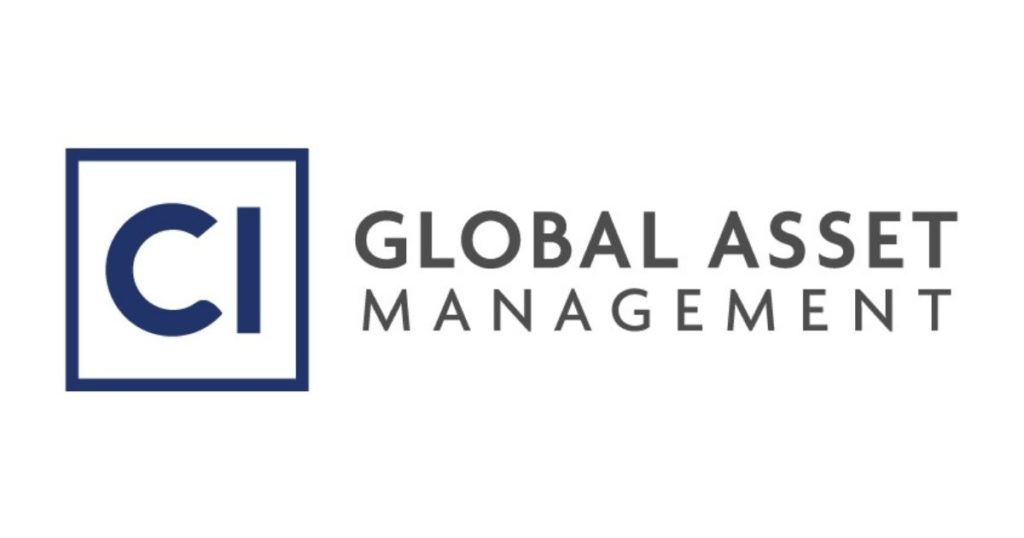
- Ticker: TXF.TO
- Inception Date: October 24, 2011
- Assets under Management: $563.34 Million
- Management Expense Ratio: 0.71%
- Management Style: Active
- Risk Rating: Medium
- Distributions: Quarterly
- Yield: 7.48%
- Stock Price: $20.58
- YTD Return: 3.56%
TXF is a covered call ETF offered by CI that specifically focuses on technology stocks as the underlying investment. It invests on an equal basis in stocks of at least 25 of the largest tech names listed in North America.
Since technology stocks tend to be very volatile, the premiums obtained from selling call options will be very high. This results in an extremely high yield on an annualized basis for investors but restricts upside growth.
TXF is a very large fund in terms of assets under management and comes with a long performance track record. The assigned risk rating of medium is likely appropriate since a covered call strategy helps to reduce some of the volatility of the underlying technology holdings.
TXF is very inexpensive and comes with one of the lowest MERs for a Canadian covered call ETF.
If you are looking for technology stock exposure and also want high income, TXF is an excellent ETF to consider.
5. BMO Covered Call Dow Jones Industrial Average ETF (Hedged)

- Ticker: ZWA.TO
- Inception Date: October 20, 2011
- Assets under Management: $205.11 Million
- Management Expense Ratio: 0.65%
- Management Style: Active (Covered Calls)
- Risk Rating: Medium
- Distributions: Monthly
- Yield: 6.21%
- Stock Price: $25.24
- YTD Return: 0.87%
BMO continues with its diverse covered call ETF suite by offering Canadians a Dow Jones Industrial Average (DJIA) ETF with a covered call overlay. Normally, currency fluctuations between the US dollar and the Canadian dollar would impact investor returns but BMO hedges this away.
Since the ETF invests in the stocks within the DJIA, you will be invested in approximately 30 US stocks across several industries.
ZWA comes with a long performance track record and is a large ETF in terms of assets. It pays investors a great yield on a monthly basis.
The ETF’s risk may be slightly lower than advertised (medium) since a traditional DJIA ETF would be rated as being medium risk as well. The covered call strategy helps to reduce overall volatility.
ZWA comes with a similar fee to most of the other covered call ETFs from BMO. It is a competitively priced fund when compared to other covered call peers.
If you are looking for currency-hedged exposure to the Dow Jones index and also want a high-income stream, BMO’s ZWA is a great choice.
6. CI Energy Giants Covered Call ETF

- Ticker: NXF.TO
- Inception Date: February 4, 2015
- Assets under Management: $497.26 Million (USD)
- Management Expense Ratio: 0.72%
- Management Style: Active
- Risk Rating: High
- Distributions: Quarterly
- Yield: 8.61%
- Stock Price: $5.89
- YTD Return: -1.47%
Another covered call ETF on CI’s ETF shelf is NXF. This ETF invests in North American energy stocks while also using a covered call approach to boost income. Energy stocks generally offer investors a good dividend yield.
The ETF invests equally across a minimum of 15 of the largest energy stocks by market capitalization.
NXF is a large ETF by assets under management and comes with a medium-length performance track record. The ETF offers a very high yield to investors on a quarterly basis.
Like most energy sector ETFs or stocks, NXF is also rated as being high risk. The overall risk of the fund is likely slightly lower since the covered call strategy somewhat reduces volatility.
NXF is very competitively priced, with fees similar to most inexpensive peers in the covered call ETF space.
If you are looking to invest in the energy sector and are looking for a high-income stream, NXF is a great ETF to consider.
7. CI Health Care Giants Covered Call ETF

- Ticker: FHI.TO
- Inception Date: June 7, 2018
- Assets under Management: $56.61 Million
- Management Expense Ratio: 0.72%
- Management Style: Active
- Risk Rating: Medium
- Distributions: Quarterly
- Yield: 5.81%
- Stock Price: $11.69
- YTD Return: 2.4%
Another covered call ETF on CI’s shelf is the CI Health Care Giants Covered Call ETF. The ETF invests in North American listed health care companies while also using a covered call strategy to provide investors with a great yield.
FHI invests in 20 of the largest health care stocks listed in North America on an equally-weighted basis.
The ETF comes with a fairly short performance track record and is relatively small in terms of assets when compared to its covered call peers. It pays a very high yield to investors on a quarterly basis.
Since FHI’s covered call strategy helps to reduce the overall volatility of the fund, it comes with a marginally lower risk than its advertised medium risk rating.
FHI comes with low fees relative to covered call ETF peers and is one of the most inexpensive options available on the Canadian ETF shelf.
As a fund targeting healthcare and offering strong income, FHI is a great choice to consider within the covered call ETF space.
8. BMO Covered Call Canadian Banks ETF

- Ticker: ZWB.TO
- Inception Date: January 28, 2011
- Assets under Management: $2.4 Billion
- Management Expense Ratio: 0.72%
- Management Style: Active
- Risk Rating: Medium
- Distributions: Monthly
- Yield: 7.62%
- Stock Price: $17.19
- YTD Return: -1.34%
Another covered call ETF option on BMO’s ETF shelf is ZWB. The ETF invests in Canadian banks, both by purchasing stock directly and through ZEB, a plain Canadian bank ETF offered by BMO. In addition, ZWB also uses a covered call strategy to boost the fund’s yield considerably.
Roughly 25% of the fund is invested in the ZEB ETF, with the remaining 75% invested directly in the stocks of Canadian banks.
ZWB is a massive ETF in terms of assets and comes with a long performance track record. The fund pays a high yield to investors on a monthly basis.
The ETF’s risk should be slightly lower than medium considering that the covered call strategy helps to smooth returns over time.
ZWB is very competitively priced, being offered at one of the lowest MERs within the Canadian covered call ETF space.
If you are looking to invest in Canadian banks and want to hold a fund with a high yield, ZWB is an excellent ETF to consider.
9. Horizons Gold Producer Equity Covered Call ETF

- Ticker: GLCC.TO
- Inception Date: April 11, 2011
- Assets under Management: $175.73 Million
- Management Expense Ratio: 0.80%
- Management Style: Active
- Risk Rating: High
- Distributions: Monthly
- Yield: 12.12%
- Stock Price: $19.51
If you are looking to add gold exposure to your portfolio, it can be done in an income-generating way through a covered call ETF like GLCC from Horizons. GLCC invests in the largest gold-producing stocks in North America through an equal-weighted approach.
Although gold as a commodity does not pay investors a yield, stocks of companies involved with gold production or extraction typically pay investors a good dividend yield.
GLCC comes with a long performance track record and is a large fund in terms of assets under management. It pays an extremely high yield to investors on a monthly basis.
While gold stocks and funds are typically rated as high risk, the covered call strategy used within GLCC helps to reduce volatility.
GLCC is marginally more expensive than peers in the covered call ETF space but is still priced reasonably.
If you are looking to target the gold sector and also value a very high-income stream, GLCC is an excellent ETF to consider for your portfolio.
10. Hamilton Enhanced Multi-Sector Covered Call ETF

- Ticker: HDIV.TO
- Inception Date: July 19, 2021
- Assets under Management: $378.31 Million
- Management Expense Ratio: 0.65%
- Management Style: Passive
- Risk Rating: Medium
- Distributions: Monthly
- Distribution Yield: 10.41%
- Stock Price: $15.39
- YTD Return: -0.46%
HDIV is a covered call ETF offered by Hamilton that uses a fund-of-funds approach as well as leverage as part of its strategy. The ETF invests in approximately seven underlying covered call ETFs in order to offer investors a better-diversified approach to covered call investing.
HDIV uses up to 25% leverage to try and boost investment returns. The underlying covered call ETFs invest primarily within Canada.
The ETF has a very short performance track record due to its recent inception. Despite this, it has rapidly accumulated assets and is a large fund in terms of AUM.
HDIV pays an extremely high yield to investors on a monthly basis. Due to its fund-of-fund structure, it comes with much higher fees than all of the other ETFs on our list.
Since HDIV uses leverage to try and amplify returns, its risk is likely higher than medium (as outlined throughout its documents).
If you are looking for a one-ticket solution to covered call investing within Canada, HDIV is a very robust portfolio to consider (although offered at a very high fee).
Are Covered Call ETFs Worth it?
In most cases, covered call ETFs invest in equities as the underlying main holding. Before you invest in a covered call equity ETF, make sure that stocks are appropriate for your risk tolerance.
Covered call ETFs would likely not be a good investment for investors that:
- Are looking for strong growth
- Do not value or have a need for income from their investments
- Want to pay minimal fund fees
On the other hand, covered call ETFs may be a good investment for investors that:
- Want a very high and frequent income stream from their ETF
- Are looking for minimal downside protection
- Want less volatility from their investment (relative to a similar ETF without covered calls)
Strategies for Adding Covered Call ETFs to your Portfolio
When thinking of how to add a covered call ETF to your portfolio, consider what the underlying investment of the fund actually is.
Generally, as the underlying holdings of a covered call ETF become more diversified, you can allocate a larger weight to the ETF.
Examples of different types of covered call ETFs can include:
- Global equity covered call
- Canadian equity covered call (investing in one country)
- Canadian energy covered call (investing in one sector and in one country)
In this example, a better-diversified fund (global equity) should have a higher potential weight than a more concentrated fund (one sector and one country).
How much income you require from your portfolio can also dictate how much to allocate to a covered call strategy. As an example, allocating 10% of your portfolio to a covered call strategy will only give you 10% of the yield (as a total of the full portfolio).
Are covered call ETFs a good fit for a TFSA?
Covered call ETFs can be an appropriate fit for a Tax-Free Savings Account (TFSA) for investors who are looking for higher income streams.
The distributions from these ETFs, which come from the premiums received from writing covered calls, can be tax-advantaged when held within a TFSA, meaning investors won’t have to pay taxes on the distributions they receive.
This makes the TFSA a great account to maximize the tax benefits of the income generated by covered call ETFs.
How to Buy the Best Covered Call ETFs in Canada
The cheapest way to buy ETFs is from discount brokers. My top choices in Canada are:
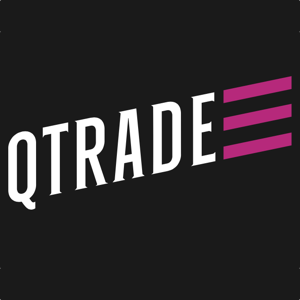
- 105 commission-free ETFs to buy and sell
- Excellent customer service
- Top-notch market research tools
- Easy-to-use and stable platform

- Stock and ETF buys and sells have $0 trading fees
- Desktop and mobile trading
- Reputable fintech company
- Fractional shares available
To learn more, check out my full breakdown of the best trading platforms in Canada.
Conclusion
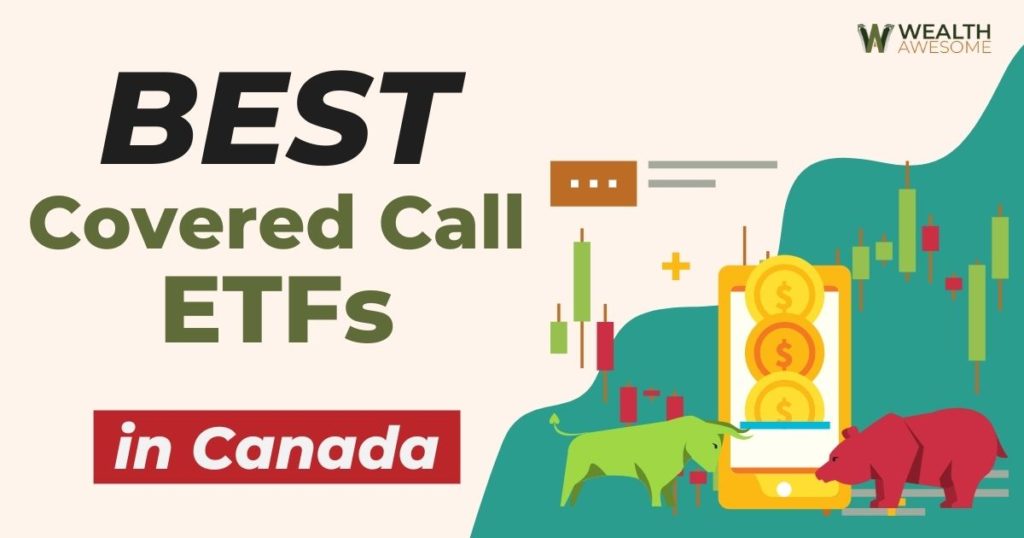
Covered call ETFs generally have great overall features due to their slightly lower volatility and high income-generating potential.
Depending on what the covered call ETF invests in, it can make up a sizable portion of an overall portfolio.
If you are looking for income on a more frequent basis, make sure to also consider some of the best monthly income funds in Canada, or check out this total list of the best ETFs in Canada.





Hi,
Great article as usual. Where is it best to hold a covered call ETF, canadian vs US/world (TFSA, RRSP, non registered)?
Thank you
Take a look at this article, I think it holds your answers, but read it carefully including the link to the Vanguard PDF: https://wealthawesome.com/best-etfs-for-tfsa/
Hi, what about the fact that the price return of covered call ETFs is negative over the long run. This means that the absolute return in dollars would keep reducing. So the high percentage yield is quite deceptive since you will be getting a lower amount in dollar terms.
Horizons’ ENCC should be on this list. Yield 11-16% paid monthly; 42% 1-year return
You should look at a couple of recently launched ones. HDIF from Harvest. Very diversified, good track record on the underlying and added leverage. Also , for Financials, look at BANK from Evolve. They also add leverage. And both only write on a maximum of 33% of their holdings so you still get the majority of any upside.
What are your thoughts on the TD ETFs, TGED and TUED? They also use covered calls and puts.
Haven’t taken a close look at them, but I will add it to my watch list, thanks Robert!